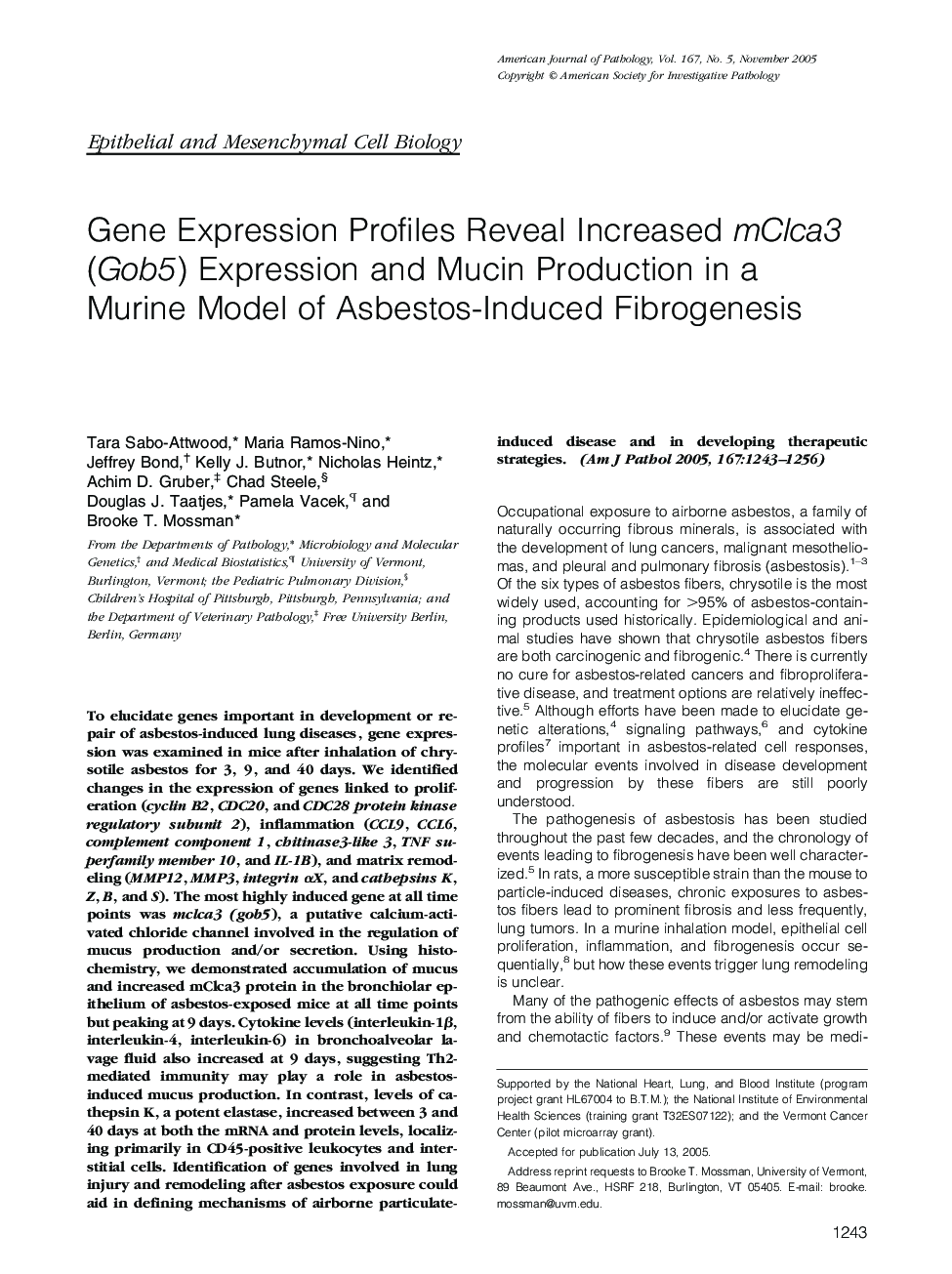| Article ID | Journal | Published Year | Pages | File Type |
|---|---|---|---|---|
| 9943206 | The American Journal of Pathology | 2005 | 14 Pages |
Abstract
To elucidate genes important in development or repair of asbestos-induced lung diseases, gene expression was examined in mice after inhalation of chrysotile asbestos for 3, 9, and 40 days. We identified changes in the expression of genes linked to proliferation (cyclin B2, CDC20, and CDC28 protein kinase regulatory subunit 2), inflammation (CCL9, CCL6, complement component 1, chitinase3-like 3, TNF superfamily member 10, and IL-1B), and matrix remodeling (MMP12, MMP3, integrin αX, and cathepsins K, Z, B, and S). The most highly induced gene at all time points was mclca3 (gob5), a putative calcium-activated chloride channel involved in the regulation of mucus production and/or secretion. Using histochemistry, we demonstrated accumulation of mucus and increased mClca3 protein in the bronchiolar epithelium of asbestos-exposed mice at all time points but peaking at 9 days. Cytokine levels (interleukin-1β, interleukin-4, interleukin-6) in bronchoalveolar lavage fluid also increased at 9 days, suggesting Th2-mediated immunity may play a role in asbestos-induced mucus production. In contrast, levels of cathepsin K, a potent elastase, increased between 3 and 40 days at both the mRNA and protein levels, localizing primarily in CD45-positive leukocytes and interstitial cells. Identification of genes involved in lung injury and remodeling after asbestos exposure could aid in defining mechanisms of airborne particulate-induced disease and in developing therapeutic strategies.
Related Topics
Health Sciences
Medicine and Dentistry
Cardiology and Cardiovascular Medicine
Authors
Tara Sabo-Attwood, Maria Ramos-Nino, Jeffrey Bond, Kelly J. Butnor, Nicholas Heintz, Achim D. Gruber, Chad Steele, Douglas J. Taatjes, Pamela Vacek, Brooke T. Mossman,
